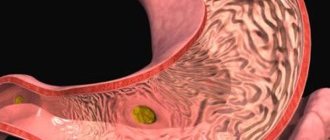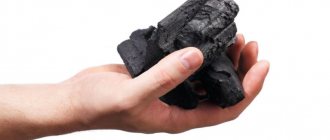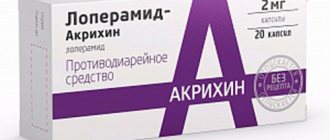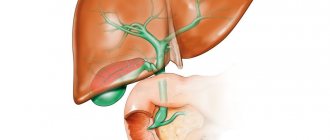Composition of Solpadeine
- 1 tablet of Solpadeine contains 30 mg of caffeine , 8 mg of codeine phosphate hemihydrate , 500 mg of paracetamol . Auxiliary components: potassium sorbate, starch, cellulose, povidone, stearic acid, talc, ethanol 95%, magnesium stearate, hydroxypropyl methylcellulose, water, carmazine.
- 1 soluble tablet of Solpadeine contains 30 mg of caffeine , 8 mg of codeine phosphate hemihydrate , 500 mg of paracetamol . Auxiliary components: sorbitol , sodium bicarbonate, polyvidone, sodium lauryl sulfate, sodium saccharin, citric acid, sodium carbonate, dimethicone.
- 1 capsule of Solpadeine contains 30 mg of caffeine , 8 mg of codeine phosphate hemihydrate , 500 mg of paracetamol . Auxiliary components: magnesium stearate, propylene glycol, starch, titanium dioxide, gelatin, IMS 74 OP, red dye iron oxide, shellac, gelatin, water, butanol, isopropanol, black dye iron oxide.
Composition of Solpadeina Fast
- 1 tablet of Solpadein Fast (Solpadein Active) contains 60 mg of caffeine and 500 mg of paracetamol . Auxiliary components: sodium bicarbonate, sodium saccharinate, sorbitol, sodium lauryl sulfate, povidone, citric acid, dimethicone, sodium carbonate.
About the drug
The product appeared in our pharmacies relatively recently. It is available in three forms: tablets, capsules and effervescent soluble tablets. Produced by a well-known pharmaceutical company.
This drug is classified as a pain reliever (analgesic). The difference between the product is as follows: “Solpadeine” effervescent acts very quickly, which makes it stand out among other products of a similar nature.
I am pleased with the wide spectrum of action of the drug. His “jurisdiction” includes the fight against headaches, dental pain, post-operative and post-traumatic pain, and menstrual pain. It has relatively few side effects and contraindications. The biggest disadvantage is perhaps the price of the product.
Release form
White capsule-shaped tablets with red inscription "Solpadeine".
- 5 tablets in a blister - 1 or 2 blisters in a pack-cover made of plastic;
- 6 tablets in a blister - 1 or 2 blisters in a pack-cover made of plastic;
- 8 tablets in a blister - 1 blister in a pack-cover made of plastic or in a pack of paper;
- 12 tablets in a blister - 1 blister in a paper pack.
Soluble white flat tablets, scored on one side.
- 2 tablets per strip - 2, 4, 12, 6 or 30 strips in a paper pack.
Capsules with a red cap and a white body, with the black inscription “Solpadeine”, inside there is a white powder with crystalline inclusions.
- 6 capsules in a blister - 1 or 2 blisters in a pack of paper;
- 12 capsules in a blister - 1 blister in a pack of paper.
Soluble white tablets with beveled edges and a notch on one side.
- 2 tablets per strip - 2 or 6 strips in a paper pack;
- 4 tablets per strip - 6 strips per pack of paper.
Pharmacodynamics and pharmacokinetics
A drug of complex composition containing a combination of 3 active ingredients.
Paracetamol has an antipyretic and analgesic effect.
Caffeine demonstrates a general tonic effect (reduces drowsiness, weakens the feeling of fatigue, increases performance, increases heart rate, increases blood pressure during arterial hypotension ), stimulates the analgesic effect of Solpadeine.
Codeine has an analgesic effect and also improves pain tolerance.
Interactions with other medicinal drugs and other types of interactions
The liquidity of infused paracetamol may increase with infused metoclopramide and domperidone and change with infused cholestyramine. The anticoagulant effect of warfarin and other coumarins due to increased risk of bleeding may result from prolonged regular use of paracetamol. Taking single doses does not show any significant effect. Barbiturates alter the antipyretic effect of paracetamol. Anti-seizure drugs (including phenytoin, barbiturates, carbamazepine), which stimulate the activity of microsomal enzymes in the liver, can cause the toxic effect of paracetamol on the liver due to the advanced stage of the drug's transformation into hepatotoxicity and metabolites. With one-hour infusion of paracetamol due to hepatotoxic effects, the toxic influx of drugs onto the liver increases. The immediate administration of high doses of paracetamol with isoniazid promotes the development of hepatotoxic syndrome. Paracetamol reduces the effectiveness of diuretics.
Don't hang out with alcohol all at once.
The immediate ingestion of caffeine with MAO inhibitors can cause an unsafe increase in arterial pressure. Caffeine enhances the effect (reduces the bioavailability) of analgesics-antipyretics, potentiates the effects of similar xanthines, alpha-beta adrenergic agonists, and psychostimulants.
Cimetidine, hormonal contraceptives, isoniazid enhance caffeine.
Caffeine reduces the effect of opioid analgesics, anxiolytics, anesthetics and sedatives, and is an antagonist of anesthetic drugs and other drugs that depress the central nervous system, a competitive antagonist of adenosine drugs, ATP. With one-hour infusion of caffeine and ergotamine, the absorption of ergotamine from the herbal tract is reduced, and with thyroid-stimulating properties, the thyroid effect is promoted. Caffeine reduces the concentration of lipid in the blood.
Contraindications
- organic diseases of the circulatory system, including heart attack and atherosclerosis ;
- anxiety and panic disorders;
- attacks of tachycardia , ventricular extrasystole ;
- asthma ; cardiopulmonary failure; disorders accompanied by increased sputum production;
- arterial hypertension;
- sleep disorders;
- decompensated liver or kidney failure ;
- traumatic brain injury;
- blood disorders ( neutropenia, anemia, agranulocytosis, thrombocytopenia, hypocoagulation );
- increased intracranial pressure;
- pregnancy and lactation;
- allergy to the components of the drug;
- age up to 12 years;
- alcohol poisoning;
- epilepsy.
Solpadeine tablets should be prescribed with caution for viral hepatitis , benign hyperbilirubinemia, alcoholism , increased excitability, alcoholic damage to liver tissue, glaucoma , deficiency of glucose-6-phosphate dehydrogenase , tendency to seizures, and in old age.
Solpadeine Fast pain reliever, soluble tablets N12
A country
Greece
The country of production may vary depending on the batch of goods. Please check with the operator for detailed information when confirming your order.
Description
Solpadeine Fast in soluble form has an analgesic effect for migraines, headaches, toothaches and periodic pain.* Thanks to the soluble form, it is absorbed more actively, helping to relieve pain.** Solpadeine Fast is a targeted effect against pain! * Instructions for medical use, RU No. P N 014417/01 dated November 18, 2008 ** Paracetamol in the form of soluble tablets is absorbed faster than in the form of film-coated tablets. Meller P.L. Journal of Clinical Pharmacology, 2000; 40:370-378
Compound
One tablet contains: Active ingredients, mg: Paracetamol 500.0 Caffeine 65.0 Excipients: Sorbitol 50.0 Sodium saccharinate 10.0 Sodium bicarbonate 1342.0 Povidone 1.0 Sodium lauryl sulfate 0.10 Dimethicone 1.0 Citric acid 925 .0 Sodium carbonate 134.2 Water* qs * – water is used for granulation and is removed during the production process.
Product description
Flat white tablets with a circumferential edge and a score on one side.
pharmachologic effect
Paracetamol Paracetamol blocks cyclooxygenase (COX) in the central nervous system, affecting the centers of pain and thermoregulation (in inflamed tissues, cellular peroxidases neutralize the effect of paracetamol on COX), which explains the almost complete absence of anti-inflammatory effect.
The lack of influence on the synthesis of prostaglandins in peripheral tissues determines the absence of a negative effect on water-salt metabolism (sodium and water retention) and the mucous membrane of the gastrointestinal tract. This property of paracetamol makes the drug particularly suitable for patients with a history of gastrointestinal disease (for example, patients with a history of gastrointestinal bleeding or elderly patients) or patients taking concomitant medications in which inhibition of peripheral prostaglandins may be undesirable. Caffeine The analgesic adjuvant effect of caffeine is due to the following mechanisms: blockade of the peripheral pronociceptive action of adenosine, activation of central noradrenergic pathways, which are the endogenous pain suppression system, and stimulation of the central nervous system with subsequent modulation of the effective pain component. Caffeine enhances the effect of paracetamol and shortens the time until the analgesic effect occurs. Clinical data showed that the combination of paracetamol and caffeine provided more effective pain relief compared to paracetamol alone (p ≤ 0.05). Caffeine also stimulates the psychomotor centers of the brain, has an analeptic effect, enhances the effect of analgesics, eliminates drowsiness and fatigue, and increases physical and mental performance. Sodium bicarbonate does not have an analgesic effect. Absorption and distribution Paracetamol is quickly and almost completely absorbed from the gastrointestinal tract. Distribution in body fluids is relatively uniform. At therapeutic concentrations, the binding of paracetamol to plasma proteins is minimal. There is no saturation of the elimination processes of paracetamol with subsequent risks of increased half-life and toxicity. There were no interactions between the active substances. Caffeine is completely and quickly absorbed from the gastrointestinal tract. Maximum concentrations are achieved within 5–120 minutes, depending on the dose, patient condition and concomitant medications. No signs of first pass metabolism were recorded. Caffeine is actively distributed throughout the body. The average binding of caffeine to plasma proteins is about 35%. The drug contains sodium bicarbonate, which promotes absorption of the drug. According to clinical studies, the absorption of paracetamol and caffeine is faster during the first 60 minutes (decrease in Tmax and increase in AUC0-10h) compared to the drug Solpadein Fast, film-coated tablets. Metabolism Paracetamol is metabolized in the liver and excreted by the kidneys in the form of glucuronide and sulfate metabolites; less than 5% is excreted as unchanged paracetamol. Caffeine is almost completely (~99%) metabolized in the liver through oxidation and demethylation to various xanthine derivatives, which are excreted by the kidneys. The hepatic cytochrome P450 isoenzyme CYP1A2 is involved in the enzymatic metabolism of caffeine. Elimination: In adult patients, caffeine elimination occurs almost entirely through hepatic metabolism. Only a small amount (1–2%) of caffeine taken in humans is excreted unchanged by the kidneys. In adults, there is individual variability in the rate of excretion. The average blood half-life of caffeine at a therapeutic dose is approximately 4.9 hours, with a range of 1.9–12.2 hours.
Indications for use
The drug Solpadein Fast is used in adults and children over 12 years of age as: - an anesthetic (for pain of mild to moderate intensity) for: - toothache, including during tooth extraction and after dental interventions; – headaches and migraines; – sore throat; – muscle and joint pain, including lower back pain; – pain caused by osteoarthritis; – ear pain (otalgia); – neuralgia; – painful menstruation (dysmenorrhea). - as a symptomatic treatment to reduce elevated body temperature in: - acute respiratory and acute respiratory viral diseases, including influenza; – after vaccination.
Contraindications
Hypersensitivity to paracetamol, caffeine or any other component of the drug; — Severe liver and kidney dysfunction; - Arterial hypertension; — Glaucoma, sleep disorders; — Children under 12 years of age; — Pregnancy and breastfeeding; — Epilepsy; — Sucrase/isomaltase deficiency, fructose intolerance, glucose-galactose malabsorption, because the drug contains sorbitol. - Simultaneous use with other medications containing paracetamol, lithium, as well as caffeine-containing drinks.
Carefully
Benign hyperbilirubinemia (including Gilbert's syndrome). — Viral hepatitis. - Alcoholic liver disease. — Chronic alcoholism. — Glucose-6-phosphate dehydrogenase deficiency. — Impaired liver and kidney function of mild to moderate severity; — The presence of severe infections, because taking the drug may increase the risk of metabolic acidosis, - Use in patients with glutathione deficiency (in particular, extremely malnourished patients suffering from anorexia, or patients with a low body mass index). If you have any of the listed diseases/conditions/risk factors, you should consult your doctor before taking the drug.
Use during pregnancy and lactation
Pregnancy The use of the drug during pregnancy is not recommended! Paracetamol The smallest dose required to achieve effect should be taken for the shortest possible period of time. Caffeine The use of caffeine may increase the risk of spontaneous abortion, so its use is not recommended during pregnancy. Breastfeeding period The use of the drug during breastfeeding is not recommended! Paracetamol Paracetamol is excreted in breast milk, but in clinically insignificant quantities when used in recommended doses. Caffeine Caffeine passes into breast milk and may have a stimulating effect on the breastfed infant, but no significant toxicity has been reported.
Directions for use and doses
For oral administration. Do not exceed the indicated dose! The smallest dose required to achieve the effect should be used for the shortest possible period of time! The minimum interval between doses of the drug Solpadein Fast should be at least 4 hours. Adults (including the elderly) and children over 12 years of age: 1-2 tablets dissolved in half a glass of water every 4-6 hours, as needed, but no more 4 times a day. The maximum daily dose is 8 tablets. Maximum duration of continuous use without consulting a doctor: 5 days as an analgesic and 3 days as an antipyretic. If you exceed the recommended dose of the drug, seek medical help immediately, even if you feel well. An overdose of paracetamol can cause liver failure. Special groups of patients Patients with impaired renal function: Before using the drug Solpadeine Fast, patients with impaired renal function should first consult with their doctor. Restrictions associated with the use of drugs containing a combination of caffeine and paracetamol in patients with impaired renal function are mainly associated with the paracetamol content of the drug. Patients with impaired liver function: Before using the drug Solpadein Fast, patients with impaired liver function should first consult a doctor. Restrictions associated with the use of drugs containing a combination of caffeine and paracetamol in patients with impaired liver function are mainly related to the paracetamol content of the drug.
Side effect
At recommended doses, the drug is usually well tolerated. The following adverse reactions were detected spontaneously during post-registration use of the drug. Adverse reactions are classified according to body systems and according to the frequency of development. The frequency of adverse reactions is determined as follows: very often (≥ 1/10), often (≥ 1/100 and Paracetamol Disorders of the blood and lymphatic system Very rare: thrombocytopenia, leukopenia, methemoglobinemia, agranulocytosis, hemolytic anemia. Immune disorders systems Very rare: anaphylaxis, skin hypersensitivity reactions including skin rash, angioedema (Angioedema), Stevens-Johnson syndrome, toxic epidermal necrolysis Disorders of the respiratory system, chest and mediastinal organs Very rare: bronchospasm in patients with hypersensitivity to acetylsalicylic acid and intolerance to other non-steroidal anti-inflammatory drugs. Disorders of the liver and biliary tract. Very rare: liver dysfunction. With long-term use of the drug in high doses, the likelihood of hepatotoxicity, nephrotoxicity and pancytopenia increases. In case of long-term use of the drug, monitoring of the blood picture is necessary . Caffeine Central nervous system disorders Very rare: dizziness, headache. Cardiac disorders Very rare: palpitations. Mental disorders Very rare: insomnia, restlessness, anxiety, irritability, nervousness. Gastrointestinal disorders Very rare: gastrointestinal disorders. When using the drug Solpadein Fast, it is not recommended to take caffeine-containing products, because this increases the risk of adverse reactions such as insomnia, irritability, anxiety, headache, gastrointestinal disorders, tachycardia, cardiac arrhythmia. If any of the listed adverse reactions occur, stop taking the drug and consult your doctor immediately.
Overdose
Symptoms (due to paracetamol) Overdose of paracetamol can cause liver failure, which may lead to the need for a liver transplant or death. In addition, acute pancreatitis is observed, accompanied by liver dysfunction and hepatotoxicity. The hepatotoxic effect in adults occurs when taking paracetamol in amounts of 10 g or more. If there are factors that influence the toxicity of paracetamol to the liver (see sections “Interaction with other drugs”, “Special instructions”), liver damage may occur after taking paracetamol in an amount of 5 g or more. The first signs of overdose usually appear after 24–48 hours and reach their maximum development on days 4–6. During the first 24 hours after an overdose, the following symptoms may appear: nausea, vomiting, stomach pain, pale skin, anorexia. After 1–2 days, signs of liver damage are determined (pain in the liver area, increased activity of “liver” enzymes); the development of carbohydrate metabolism disorders and metabolic acidosis is possible. In severe cases of overdose, encephalopathy (impaired brain function), bleeding, hypoglycemia, cerebral edema, even death, the need for liver transplantation, and death may develop as a result of liver failure. It is also possible to develop acute renal failure with acute tubular necrosis, the characteristic signs of which are pain in the lumbar region, hematuria (admixture of blood or red blood cells in the urine), proteinuria (increased protein in the urine), while severe liver damage may be absent. There have been cases of heart rhythm disturbances and pancreatitis. Treatment If an overdose of Solpadeine Fast is suspected, even in the absence of pronounced first symptoms, it is necessary to stop using the drug and immediately consult a doctor for medical assistance. During the first hour after an overdose, but no later than 4 hours, it is recommended to lavage the stomach and take enterosorbents (activated carbon, polyphepane). The concentration of paracetamol in the blood plasma should be determined, but not earlier than 4 hours after the overdose (earlier results are unreliable). Administration of acetylcysteine within 24 hours after an overdose. The maximum protective effect is ensured during the first 8 hours after an overdose; over time, the effectiveness of the antidote drops sharply. If necessary, acetylcysteine is administered intravenously. In the absence of vomiting, methionine can be used before the patient is admitted to the hospital. The need for additional therapeutic measures (methionine intake, intravenous acetylcysteine) is determined depending on the concentration of paracetamol in the blood plasma, as well as the time elapsed after its administration. Treatment of patients with severe liver dysfunction 24 hours after taking paracetamol should be carried out in conjunction with specialists from a poison control center or specialized liver disease department. Symptoms (caused by caffeine) Epigastric pain, vomiting, frequent urination, tachycardia, arrhythmia, stimulation of the central nervous system (insomnia, restlessness, agitation, anxiety, increased neuro-reflex excitability, tremor and convulsions). It should be borne in mind that the appearance of clinically significant symptoms of caffeine overdose when taking the drug is always associated with severe liver damage due to an overdose of paracetamol. Treatment There is no specific antidote. Treatment includes supportive measures, such as drinking plenty of fluids and maintaining vital signs. Within 1 hour to 4 hours after an overdose, it is recommended to take activated carbon. To reduce the effects of caffeine on CNS function, intravenous sedatives and beta-adrenergic antagonists are recommended to reduce the cardiotoxic effect. High doses of sodium bicarbonate may cause gastrointestinal symptoms including nausea and vomiting. In addition, high doses of sodium bicarbonate can cause hypernatremia. If hypernatremia is suspected, the patient's electrolyte levels should be monitored and treated accordingly.
Interaction with other drugs
If the patient is already taking other medications, you should consult a doctor before starting to take Solpadeine Fast. When taken regularly over a long period of time, the drug enhances the effect of indirect anticoagulants (warfarin and other coumarins), which increases the risk of bleeding. Occasional administration of a single dose of the drug does not have a significant effect on the effect of indirect anticoagulants. Enhances the effect of MAO inhibitors. Barbiturates, carbamazepine, phenytoin, primidone and other anticonvulsants, ethanol, rifampicin, phenylbutazone, butadione, preparations of St. John's wort and other inducers of microsomal oxidation increase the production of hydroxylated active metabolites, causing the possibility of developing severe liver damage with small overdoses of paracetamol (5 g or more) . Inhibitors of microsomal liver enzymes (cimetidine) reduce the risk of hepatotoxicity. Under the influence of paracetamol, the elimination time of chloramphenicol (chloramphenicol) increases by 5 times, as a result of which the risk of chloramphenicol (chloramphenicol) poisoning increases. Metoclopramide and domperidone increase, and cholestyramine reduces the rate of absorption of paracetamol. The drug may reduce the effectiveness of uricosuric drugs. The simultaneous use of paracetamol and alcoholic beverages increases the risk of developing liver damage and acute pancreatitis. Caffeine accelerates the absorption of ergotamine. The drug should not be taken simultaneously with caffeine-containing products. Caffeine may enhance the excretion of lithium from the body, so simultaneous use of the drug with lithium-containing drugs is not recommended.
special instructions
If no improvement is observed while taking the drug, or the headache becomes constant, you should consult a doctor. The drug Solpadein Fast should not be used with other paracetamol-containing drugs, since taking the drugs together can cause an overdose of paracetamol. An overdose of paracetamol may cause liver failure, which may lead to the need for liver transplantation or death. The drug Solpadeine Fast should not be taken with caffeine-containing foods (tea, coffee, etc.), because this can lead to restlessness, anxiety, irritability, insomnia, headache, gastrointestinal disorders, tachycardia, cardiac arrhythmia. Patients with glutathione deficiency due to an eating disorder, cystic fibrosis, HIV infection, starvation, malnutrition are susceptible to overdose, so precautions must be taken and it is recommended to consult a doctor before taking the drug. Cases of liver failure/impaired liver function have been reported with a small overdose of paracetamol (5 g or more) in patients with low glutathione levels, in particular in extremely malnourished patients suffering from anorexia, chronic alcoholism or patients with a low body mass index. The use of Solpadeine Fast by patients with low glutathione levels, for example, with sepsis, may increase the risk of developing metabolic acidosis, accompanied by symptoms of rapid, difficult breathing (feeling of shortness of breath, shortness of breath), nausea, vomiting, loss of appetite. If these symptoms occur simultaneously, you should immediately consult a doctor. To avoid toxic liver damage, paracetamol should not be combined with alcoholic beverages, or taken by persons prone to chronic alcohol consumption. Concomitant liver diseases increase the risk of further liver damage when taking Solpadeine Fast. When taking the drug in patients with non-alcoholic cirrhosis of the liver there is a high risk of overdose. Patients suffering from atopic bronchial asthma and hay fever have an increased risk of developing allergic reactions. When conducting tests to determine uric acid and blood glucose levels, you should inform your doctor about taking the drug. The drug can change the results of doping control tests for athletes. For patients on a salt-free or low-salt diet, the sodium content of the tablet (427 mg) should be taken into account when calculating daily salt intake. The drug contains sorbitol. Patients with fructose intolerance should not use this drug.
Release form
Soluble tablets. 2 tablets per laminated strip (kraft bleached paper / polyethylene / aluminum foil / polyethylene or glass-coated paper / polyethylene / aluminum foil / surlin). 6 strips of 2 tablets each along with instructions for use in a cardboard box
Storage conditions
Store at a temperature not exceeding 25 C. Keep out of the reach of children.
Best before date
4 years. Do not use after expiration date.
Side effects
In the doses indicated below, the drug is well tolerated, but in some cases angioedema , skin rash, bronchospasm, and urticaria .
Codeine can cause: nausea, constipation , dizziness, vomiting, drowsiness, gastralgia , sleep disturbances, tachycardia .
Paracetamol can cause: agranulocytosis, leukopenia, thrombocytopenia, hemolytic anemia, methemoglobinemia, liver and kidney dysfunction (with long-term use in high doses).
Caffeine can cause: anxiety, agitation, headache, tachycardia , increased blood pressure, arrhythmias .
Pharmacological properties of the drug Solpadeine
Pharmacodynamics. Paracetamol is an analgesic-antipyretic. Caffeine increases the effectiveness of analgesia due to its stimulating effect on the central nervous system. Codeine phosphate has a moderate analgesic and weak antitussive effect. Pharmacokinetics. Paracetamol is well absorbed from the gastrointestinal tract. The maximum concentration in the blood plasma is reached after 15–60 minutes, the half-life from the blood plasma is 1–4 hours. It is relatively evenly distributed in the body, 20–30% is bound to blood plasma proteins. Metabolized in the liver and excreted almost exclusively by the kidneys in the form of conjugated metabolites. After oral administration, caffeine is rapidly absorbed. The maximum plasma concentration is reached within 1 hour, the half-life is approximately 3.5 hours. 65–80% of caffeine is excreted in the urine in the form of 1-methyluric acid and 1-methylxanthine. Codeine phosphate is well absorbed after oral administration. Approximately 86% of an oral dose is excreted in urine within 24 hours.
Instructions for use of Solpadeine (Method and dosage)
Solpadeine capsules and tablets, instructions for use
Persons over 16 years of age are recommended to take 1-2 tablets (effervescent tablets or capsules) up to four times a day, with an interval of at least four hours between doses. The largest permitted single dose is 2 tablets, the largest permitted daily dose is 8 tablets.
Children 12-16 years old are prescribed to take 1 tablet (effervescent tablet or capsule) up to 4 times a day with an interval of at least four hours between doses. The largest permitted single dose is 1 tablet, the largest permitted daily dose is 4 tablets.
The drug should be taken after meals. Soluble (or “effervescent”) Solpadeine must be diluted in a glass of water before taking.
You should not take the described drug for more than 5 days in a row when treating pain and more than 3 days in a row when treating fever.
Solpadeine Active (Solpadeine Fast), instructions for use
Solpadeine Fast effervescent tablets must be dissolved in a glass filled with water before taking.
Persons over 12 years of age are recommended to take 1-2 tablets up to four times a day, with an interval of at least four hours between doses. The largest permitted single dose is 2 tablets, the largest permitted daily dose is 8 tablets.
You should not take the described drug for more than 5 days in a row when treating pain and more than 3 days in a row when treating fever.
Indications for use
Solpadeine is prescribed to adult patients and adolescents over 12 years of age for pain, including the following pain:
- neuralgia;
- toothache;
- a sore throat;
- sinusitis pain;
- migraine;
- headache;
- muscle and joint pain;
- pain with sprains and radiculitis;
- menstrual pain.
The drug is also used for infectious and inflammatory diseases, including colds and flu, to reduce elevated body temperature (in adolescents over 12 years of age and adults).
Overdose
In case of overdose (even if you feel well), you should immediately consult a doctor.
Signs of overdose: stomach pain, vomiting, nausea, pale skin, anorexia. After 2 days, symptoms of deterioration in liver function are revealed. hepatic coma is possible .
Treatment of overdose: use of enterosorbents , gastric lavage, symptomatic therapy.
Solpadeine overdose, symptoms and treatment
Symptoms of paracetamol overdose in the first 24 hours: pallor, nausea, vomiting, anorexia and abdominal pain. Symptoms of liver damage may appear 12–48 hours after overdose. Impaired glucose metabolism and metabolic acidosis may occur. In severe intoxication, liver failure can lead to encephalopathy, coma and death. Acute renal failure with acute renal tubular necrosis can develop even in the absence of severe liver damage. Cardiac arrhythmia was also noted. Liver damage is possible in adults who took 10 g of paracetamol or more, as well as in children who took paracetamol in a dose of more than 150 mg/kg body weight. In case of overdose, emergency medical care is required. Oral methionine or intravenous acetylcysteine can provide a positive effect for 48 hours after an overdose. According to indications, symptomatic therapy is carried out. Caffeine overdose may cause agitation, restlessness, insomnia, diuretic effects, flushing, muscle cramps, gastrointestinal dysfunction, tachycardia or cardiac arrhythmia, incoherence of thoughts and speech, psychomotor agitation, or periods of "fatigue." The use of high doses of codeine can cause miosis, arterial hypotension, and respiratory depression. The specific antidote is naloxone.
Interaction
Barbiturates, Salicylamide , Rifampicin , antiepileptic drugs and other activators of microsomal oxidation accelerate the production of toxic paracetamol , which negatively affect liver function.
The half-life of Chloramphenicol under the influence of paracetamol is extended by approximately 5 times.
Metoclopramide accelerates the adsorption of paracetamol .
With repeated use, paracetamol can enhance the effects of indirect anticoagulants , which increases the risk of bleeding.
Caffeine accelerates the absorption of Ergotamine .
Blockers of microsomal oxidation reduce the risk of hepatotoxic effects of the drug.
Taking nervous system depressants (including alcohol) with codeine may enhance their effects.
Consequences of combining medication with alcohol
Even light beer should not be drunk after taking pills. In addition to Paracetamol, the medicine contains codeine and caffeine.
The latter has the property:
- increase heart rate;
- act stimulatingly;
- constrict blood vessels in the brain.
It is difficult to predict what the combination of drinking and medication will lead to. Among the likely consequences are tachycardia (accelerated heart rate) and changes in blood pressure (blood pressure). Serious problems with the cardiovascular system are possible.
Doctors recommend avoiding this combination. If a person has taken alcohol with painkillers and his condition worsens, you should not self-medicate. It is better to call doctors immediately.
special instructions
It is recommended to take Solpadeine with caution in case of liver or kidney diseases, intestinal disorders, after cholecystectomy , when taking antiemetics, drugs that cause drowsiness, indirect anticoagulants, monoamine oxidase inhibitors, ethanol together.
Solpadeine should not be used together with other drugs including paracetamol or codeine .
With prolonged use in dosages significantly higher than those indicated, periodic monitoring of the blood condition is necessary.
During treatment with the drug, excessive intake of coffee and tea is not recommended, because this can lead to tachycardia , sleep disturbance, agitation and even arrhythmia .
The patient should be warned that if side effects from digestion, allergic reactions , skin rashes, ulceration on the oral mucosa, bleeding and bruises , it is necessary to stop taking Solpadeine and immediately consult a doctor.
With long-term uncontrolled use of the described drug in large dosages, addiction (decreased analgesic effect) and dependence may occur.
During drug therapy, it is recommended to be careful when driving.
Side effects of the drug Solpadeine
Pills. Possible rash, urticaria, angioedema, constipation, nausea, dizziness, drowsiness (depending on the dose and individual sensitivity), insomnia, agitation due to a stimulating effect on the central nervous system. With prolonged use, hepatotoxic effects may occur. Soluble tablets and capsules. Very rarely, changes in blood composition have been reported, including thrombocytopenia and agranulocytosis, renal colic, and allergic reactions. Codeine can cause constipation, nausea, dizziness and drowsiness, bradycardia, arrhythmia, and hypotension.
Analogs
Level 4 ATC code matches:
Phenacetin
Combiflu
Chlorphenamine
Coldflu
Calpol
Fervex
Panadol Extra
Panadol for children
Panadol
Efferalgan
Milistan
Coldrex Maxgripp
Coldrex Hotrem
Coldrex
AntiGrippin
Unispaz
Pentalgin Plus
Rapidol
Maxicold
Perfalgan
Kaffetin , Aurora Hot Sip , Adzhicold, Gripout , Pentalgin , Ibuprofen , Mig 400 .
Price, where to buy
The price of Solpadeine in capsules No. 12 in Russia is on average 150 rubles, and in Ukraine it can reach 39 hryvnia.
The price of Solpadein Fast No. 12 in Russia is 130-150 rubles, in Ukraine – 30-41 hryvnia.
- Online pharmacies in RussiaRussia
- Online pharmacies in UkraineUkraine
- Online pharmacies in KazakhstanKazakhstan
ZdravCity
- Solpadeine Fast Solpadeine Fast pain reliever, tablets, 12 pcs. GlaxoSmithKline Dargavan LTD
113 rub. order
Pharmacy Dialogue
- Solpadeine Fast pain reliever, soluble tablets N8GlaxoSmithKline
140 rub. order
- Solpadeine Fast pain reliever, soluble tablets N12GlaxoSmithKline
RUB 227 order
- Solpadeine Fast pain reliever, tablets N12GlaxoSmithKline
120 rub. order
show more
Pharmacy24
- Solpadeine Active N12 tablets GlaxoSmithKline Dungarvan Limited, Ireland
52 UAH.order - Solpadeine Active No. 12 effervescent tablets GlaxoSmithKline Dungarvan Limited, Ireland/Famar A.V.E. Antosa plant, Greece
61 UAH order
PaniPharmacy
- Solpadeine active tablets Solpadeine Active soluble tablets No. 12 Ireland, GlaxoSmithKline Dangarvan
62 UAH.order
- Solpadeine capsule Solpadeine capsules No. 12 Spain, SKB
51 UAH order
- Solpadeine active tablets Solpadeine Active tablets No. 12 Ireland, GlaxoSmithKline Dangarvan
55 UAH order
- Solpadeine tablets Solpadeine tablets. No. 12 Ireland, GlaxoSmithKline Dangarvan
38 UAH order
show more
Reviews
Elena, 32 years old
I often had a headache, I wanted to buy regular Citramon at the pharmacy, but the doctor advised me to buy the drug Solpadeine. I dissolved the tablet in water and it took effect within half an hour. I thought that the pain would go away for a while and that I would have to take the pill again, but everything just went away. I feel great. I take the medicine as needed.
Tanya, 28 years old
This drug was prescribed by the therapist because... I had severe headaches. Within 15 minutes after starting to use the medicine, I felt lighter, and after an hour I completely forgot about the pain. An excellent remedy and most importantly fast-acting, although I had tried many different expensive medications before. Solpadeine is always in my medicine cabinet.
Sveta, 30 years old
I take Solpadeine effervescent. It’s a very convenient form, I dissolve it in warm water and drink it right away, the taste is not bitter. This pain reliever helps with women's pain and abdominal cramps. After it there were never any side effects, as with other analgesics. The only downside is that the drug is not sold without a prescription, and I don’t like going to the doctor again.









